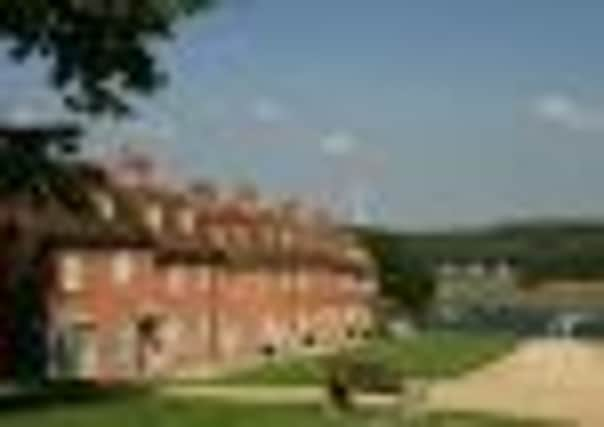Enchanted forest


IT is a peculiar charm of England, I suppose, that a place must forever bear the title “new” because it dates back merely to the 11th century and no further.
The New Forest, a 200 square-mile expanse of oak, ash, beech and conifer on the south coast of England, was “new” only to William the Conqueror almost a millennium ago, and as you pick your way along the endless footpaths, past age-old trees and the semi-wild ponies that wander between them, it is not difficult to imagine that, for a fleeting moment at least, you have been transported back to that ancient world.
Advertisement
Hide AdAdvertisement
Hide AdWilliam famously cleared many hamlets and farmsteads where locals had lived and toiled for centuries because he wanted to create a hunting forest where he could enjoy English countryside sports. It is this royal protection which has helped to ensure so little has changed in the time that has since passed.
For to take a trip to the New Forest today is to witness a flashback to another England, a feudal land of picture-box villages filled with thatched roofs and fine old inns.
Even the forest’s original system of governance is still in evidence. About 400 of its inhabitants still bear the landed title of Commoner, giving them rights to graze ponies, cows and other animals throughout the rolling woodland.
These are not meaningless archaic laws – they are actively in use, and mean that any trip to the forest will inevitably be dotted with magical encounters as you stumble across a small group of horses lolling casually by the roadside, or a herd of cows wandering through the centre of a hamlet.
Advertisement
Hide AdAdvertisement
Hide AdThe animals are a constant feature of forest life, particularly so during the six-week period of “pannage” each autumn, when the Commoners turn their pigs out into the forest to hoover up the acorns which would otherwise prove poisonous to the horses that roam free.
Indeed our host for the weekend, B&B owner Christine Ames, insists that autumn is the finest time to visit, after the school holiday crowds have departed and as the trees begin to explode into a blistering array of fiery reds and golds.
We are staying at Christine’s delightful Kingswood Cottage in Ashurst, a tiny hamlet perched on the edge of the vast forest and home to the terrific Herb Pot Bistro, one of any number of fine places to eat dotted throughout the forest.
The trick when choosing a B&B is to keep your eye out for places advertising a “New Forest breakfast” – your eggs, bacon, sausage, mushrooms and even bread will all have been locally-sourced, and a heartier start to the day it is hard to imagine. Christine mentions in passing that the smoked trout she is serving to one of the other guests was one she caught herself while out fly-fishing the weekend before. Clearly, this is a place to eat well.
Advertisement
Hide AdAdvertisement
Hide AdThough the forest is vast and worthy of exploration, a car is far from essential. You can arrive at Ashurst by rail, and a system of hop-on-hop-off open-top buses wind their way around the forest from village to village for most of the year.
Furthermore, given the network of well signposted paths and trails which criss-cross the forest in every direction, horseback and bicycle remain two of the most popular ways to get around. Rentals and day-trips are available from countless places.
We took a gentle stroll down along the Beaulieu River to Buckler’s Hard, a tiny hamlet of original Georgian cottages where ships were built for Nelson’s fleet from the ample timber of the forest.
Continue south and the forest stretches all the way to the coast, and a happy afternoon can be whiled away in the beautiful Georgian market town of Lymington. Watersports such as kayaking attract the adventurous. Fish and chips and ice cream beside the beautiful marina tempt opthers. For families in search of sandy coves, beaches proliferate, west along the coast towards Bournemouth.
Advertisement
Hide AdAdvertisement
Hide AdOther tourist attractions within the forest target all the family. The National Motor Museum at Beaulieu – currently featuring 50 James Bond vehicles, no less – the beautiful Exbury Gardens; the irrepressible Peppa Pig World.
Being of a literary wont, we are delighted to find the grave of Sir Arthur Conan Doyle in the churchyard at the village of Minstead, a Sherlock Holmes-style pipe left lovingly beside the headstone by a recent passer-by. In nearby Lyndhurst you can also see the grave of Alice Liddell, the little girl on whom the original Alice (in Wonderland) was based.
But these are all distractions, really, from the primary joy of the New Forest – a warm Sunday morning when we wake to the sun shining in through the window, and slip out after breakfast for an early morning stroll through the silent woodland.
A new forest it may once have been, but this remains a place of ancient English pleasures.
Getting there
Advertisement
Hide AdAdvertisement
Hide AdJack Blanchard and his partner stayed at Kingswood Cottage B&B in Ashurst.
Double rooms start from £60 per night, including a full ‘New Forest’ breakfast. Single tariffs and twin rooms are also available.
For more information or to book, visit www.kingswoodcottage.co.uk or call 023 8029 2582.
For more information about the New Forest, visit www.newforest.co.uk.